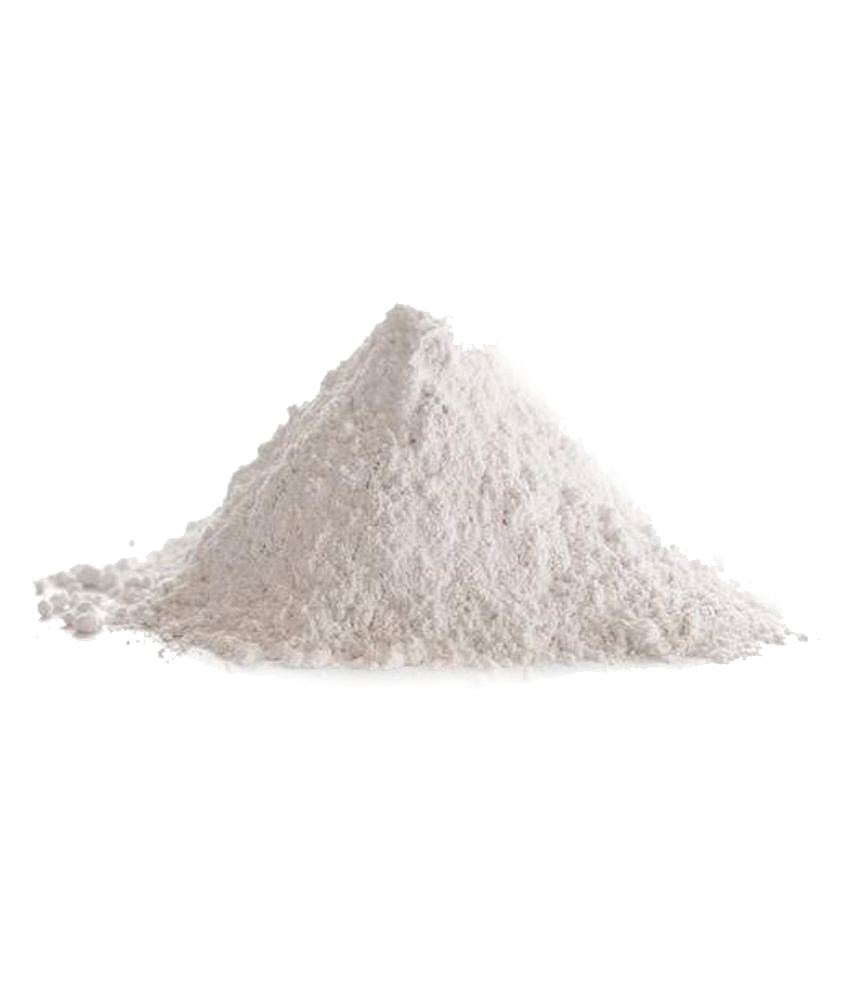RCF GYPSUM
Calcium Sulphate (CaSO42H2O)

BENEFITS OF LIMING WITH AGRICULTURAL GYPSUM
- Provides calcium to soil without increasing the pH
- Removes excess sodium in the soil
- increases crop yields by improving soil moisture content, germination, root growth and the uptake of crucial plant nutrients
- Optimizes the cultivation period
- Enhances water infiltration of the soil
General Description
Gypsum is a very soft sulphate mineral composed of calcium sulfate dihydrate, with the chemical formula CaSO42H2O. it is the second softest mineral on the Mohs Hardness Scale. It forms as an evaporite mineral and as a hydration product of anhydrite.
Chemical Analysis
CaSO42H2O…………………..93.2%
P2O5…………………………………..1.5%
Water Soluble P2O5………..0.6%
SiO2 .………………………………..4.3%
Lead as Pb…………..Not Detected
Iron as Fe…………………………….0.1%
H2O……………………………………15.5%
Organic Matter…..Not Detected
Sulphur…………………Not Detected
Physical Properties
Gypsum is moderately water-soluble (~2.0-2.5 g/L at 250C) [6] and, in contrast to most other salts, it exhibits a retrograde solubility, becoming less soluble at higher temperatures. When the crystal lattice is heated it loses liquid water molecules to evaporation and thus gains solidity.
As for anhydrite, its solubility in saline solutions and in brines is also strongly dependent on NaCI concentration.
USES
- Gypsum board primarily used as a finish for walls and ceilings; known in construction as drywall or plasterboard
- Plaster ingredient
- Fertiliser and soil conditioner. In the 18th and early 19th century, Nova Scotia gypsum, often referred to as plaster, was highly sought fertiliser for wheat fields in the United States. It is also used in ameliorating sodic soils
- A binder in fast-dry tennis court clay
- Plaster of Paris (surgical splints; casting moulds; modeling)
- A wood substitute in the ancient world; for example, when wood became scarce due to deforestation on Bronze Age Crete, gypsum was employed in building construction at locations where wood was previously used. [19]
- A tofu (soy bean curd) coagulant, making it ultimately a major source of dietary calcium, especially in Asian cultures which traditionally use few dairy products
- Adding hardness to water used for home brewing
- A component of Portland cement used to prevent flash setting of concrete
- Soil/water potential monitoring (soil moisture tension)
- A common ingredient in making mead
- In the medieval period it was mixed by scribes and illuminators with lead carbonate (powdered white lead) to make gesso which was applied to illuminated letters and gilded with gold in illuminated manuscripts
- In foot creams, shampoos and many other hair products
- A medicinal agent in traditional Chinese medicine called Shi Gao
- Impression plasters in dentistry
HANDLING
HAZARDS: The material is non-toxic, however ingestion of a sufficient quantity can cause injury
TOXICITY: The oral LD-50 to rats is 4300 mg/kg
TLV – TWA 1.0 mg/m3
SPECIAL PRECAUTIONS: Full protective clothing must be worn when handling the material. Avoid ingestion, inhalation, skin and eye contact.
Disclaimer
This technical information is submitted on the basis of our own research and the research of others, and we believe it is accurate. However, no guarantee of its accuracy is made neither can we cover every possible application of our products nor can we anticipate every variation encountered in manufacturing equipment and methods. For this reason our products are sold without warranty, express or implied, and also on the condition those purchasers conduct their own tests to determine the suitability of such products for their particular purposes. Statements concerning the possible use of our products are not intended as recommendations to use our products in the infringement of any patent.
